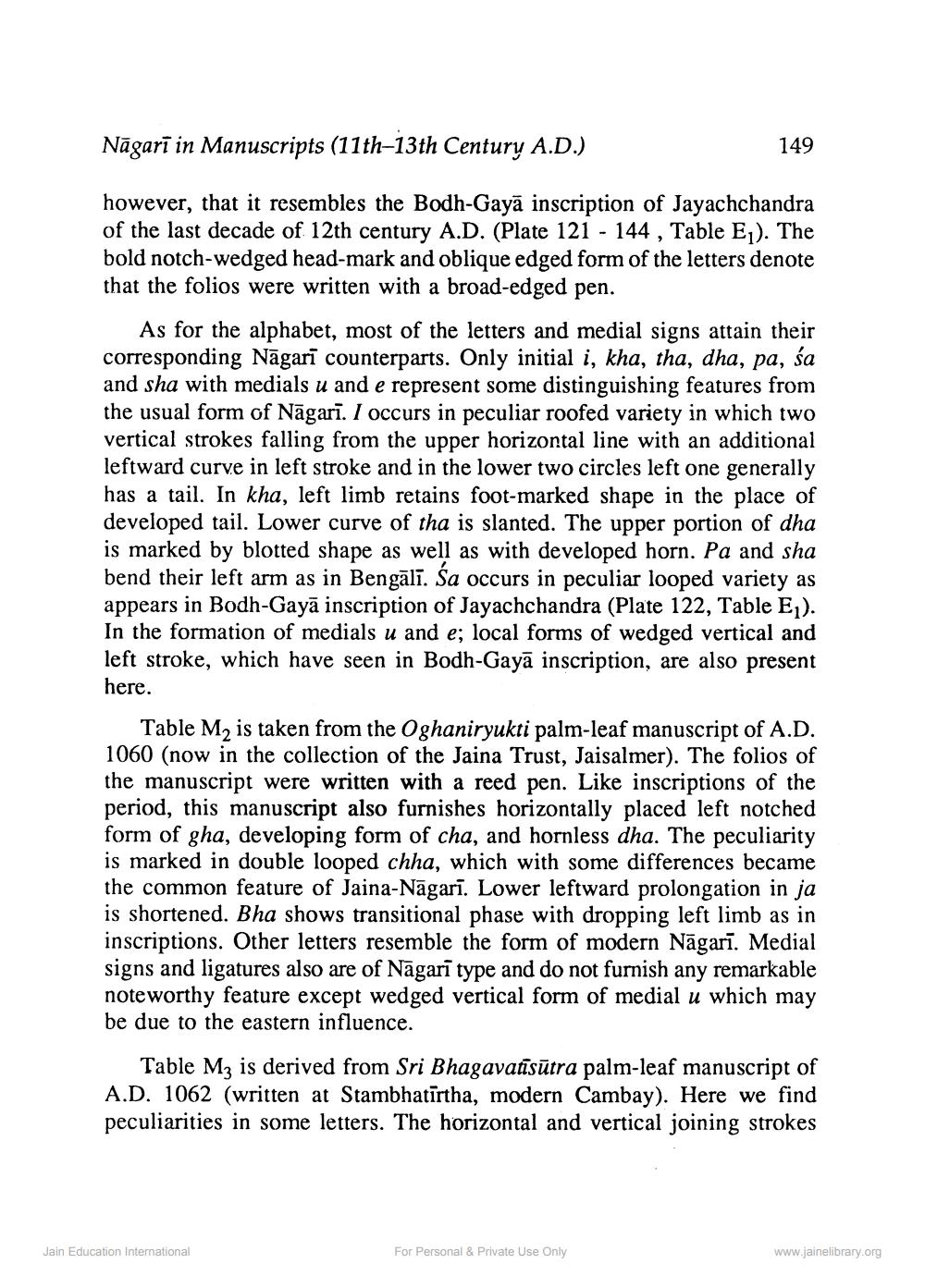________________
Nāgarī in Manuscripts (11th-13th Century A.D.)
however, that it resembles the Bodh-Gaya inscription of Jayachchandra of the last decade of 12th century A.D. (Plate 121 - 144, Table E1). The bold notch-wedged head-mark and oblique edged form of the letters denote that the folios were written with a broad-edged pen.
As for the alphabet, most of the letters and medial signs attain their corresponding Nagari counterparts. Only initial i, kha, tha, dha, pa, sa and sha with medials u and e represent some distinguishing features from the usual form of Nagari. I occurs in peculiar roofed variety in which two vertical strokes falling from the upper horizontal line with an additional leftward curve in left stroke and in the lower two circles left one generally has a tail. In kha, left limb retains foot-marked shape in the place of developed tail. Lower curve of tha is slanted. The upper portion of dha is marked by blotted shape as well as with developed horn. Pa and sha bend their left arm as in Bengālī. Śa occurs in peculiar looped variety as appears in Bodh-Gaya inscription of Jayachchandra (Plate 122, Table E1). In the formation of medials u and e; local forms of wedged vertical and left stroke, which have seen in Bodh-Gaya inscription, are also present here.
149
Table M2 is taken from the Oghaniryukti palm-leaf manuscript of A.D. 1060 (now in the collection of the Jaina Trust, Jaisalmer). The folios of the manuscript were written with a reed pen. Like inscriptions of the period, this manuscript also furnishes horizontally placed left notched form of gha, developing form of cha, and hornless dha. The peculiarity is marked in double looped chha, which with some differences became the common feature of Jaina-Nagarī. Lower leftward prolongation in ja is shortened. Bha shows transitional phase with dropping left limb as in inscriptions. Other letters resemble the form of modern Nagari. Medial signs and ligatures also are of Nagari type and do not furnish any remarkable noteworthy feature except wedged vertical form of medial u which may be due to the eastern influence.
Table M3 is derived from Sri Bhagavatsūtra palm-leaf manuscript of A.D. 1062 (written at Stambhatīrtha, modern Cambay). Here we find peculiarities in some letters. The horizontal and vertical joining strokes
Jain Education International
For Personal & Private Use Only
www.jainelibrary.org




